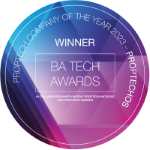Due to its steady returns, passive income, and growth potential, Commercial Real Estate (CRE) investing is gaining a reputation as a solid investment vehicle.
However, even though Commercial Real Estate has the potential to generate profits, not all business investments are equal. Therefore, a successful career in Commercial Real Estate requires a thorough understanding of, well, Commercial Real Estate.
On that note, this article will cover the essentials that you need to know about Commercial Real Estate Investment and how Proptech can support your investments.
What is Commercial Real Estate?
Commercial Real Estate (CRE) is property used for business or as a workspace, not as a residence. Most of the time, commercial real estate is leased out to tenants who use the property for activities that generate cash. Anything from a single storefront to an entire shopping mall, falls under this real estate category.
In essence, Commercial property can be leased out or held and sold again to provide income for people, businesses, and corporate interests.
Commercial Real Estate as an Asset Class
The term “asset class” refers to a group of investments with common characteristics and strategies. They get divided into traditional and alternative investment categories.
Real estate is the most popular alternative investment, especially for those just starting. For investors to assess various possible investment properties more effectively, the real estate business divides the asset class into property types and property classes.
The five main real estate types are:
- Residential
- Commercial
- Industrial
- Land
- Space-use properties
As the title suggests, we will discuss commercial real estate as an asset class here. Since various properties fulfill various commercial purposes, they are divided into four main groups:
- Multi-family
- Office Space
- Retail
- Industrial
Let’s take a closer look at each of them.
Multi-family
Properties that have numerous living quarters – or “units” – under one roof are referred to as “multi-family.” Apartment buildings are a common type of multi-family property.
Apartment complexes only qualify as “residential” if they have five or fewer units. Commercial real estate is any structure with five or more apartments. This distinction is made because building owners usually buy apartments to make money from the rental units, rather than to live there.
Office Space
Cubicles, meeting rooms, a reception area, and other common areas are standard fixtures in Commercial Real Estate known as office buildings. Office leases are often long-term since few businesses desire to uproot their entire staff to relocate every few years.
Retail
Everything from little corner stores to gigantic malls with multiple floors of shops and restaurants is considered retail real estate. The cost of a square foot is typically higher than that of an office building. This increase in cost stems from the need for foot traffic.
Usually, commercial retail leases are long-term – 5-10 years – similar to those in office buildings.
Industrial
Warehouses and other forms of production or distribution facilities are included in the industrial sector of commercial real estate. They have one tenant and can be found in rural or suburban settings.
Since these structures typically are used for industrial purposes, strict adherence to zoning laws is required.
There is no “fifth” category. However, additional commercial real estate properties don’t fit neatly into the above-mentioned categories. CRE properties also include hotels, hospitals, nursing homes, and self-storage facilities.
Proptech can Support the Sector
Proptech optimizes how individuals explore, rent, acquire, sell, and manage commercial real estate property through technology. Cross-industry technology is a current trend in commercial real estate, benefiting developers, investors, and building management systems and organizations.
The Impact of ESG on Property Development
Strict ESG rules and processes may build trust, attract and keep employees and tenants, minimize costly mishaps, and address community needs. The corporate social responsibility of a firm gets exemplified best by its various social activities, which frequently get evaluated at both the partnership and general company levels.
Because they seek to rent high-performing facilities from a socially responsible company with strict ESG building practices, tenants today consider organizations’ ESG initiatives when making tenancy decisions. Therefore, the management must assess its social obligation concerning the neighborhood, and Proptech streamlines this process.
Climate Data Used to Guide Property Investment Decisions
Climate risk weighting differs by the investor, but it generally affects investment decisions and outcomes. Some investors are pulling back from local property markets owing to climate risk. Fortunately, Proptech can now make better decisions about building materials, energy efficiency, and upgrading old structures to make them sustainable.
How Modern Commercial Buildings Help us Reach Climate Goals
Since energy use accounts for the majority of carbon emissions associated with buildings, lowering consumption through energy-efficient design is the first—and simplest—step in mitigating emissions. Thus, a brand-new or older building that has become modernized with new mechanical systems, heating, cooling, and lighting is essential to reaching climate goals.
In this regard, ProptechOS is a building management platform that can help with your Commercial Real Estate needs. The OS unifies BIM, BMS, business, and IoT building data, connecting all building data sources and simplifying system integrations.
To leverage your Commercial Real Estate investment, give ProptechOS a try today!

